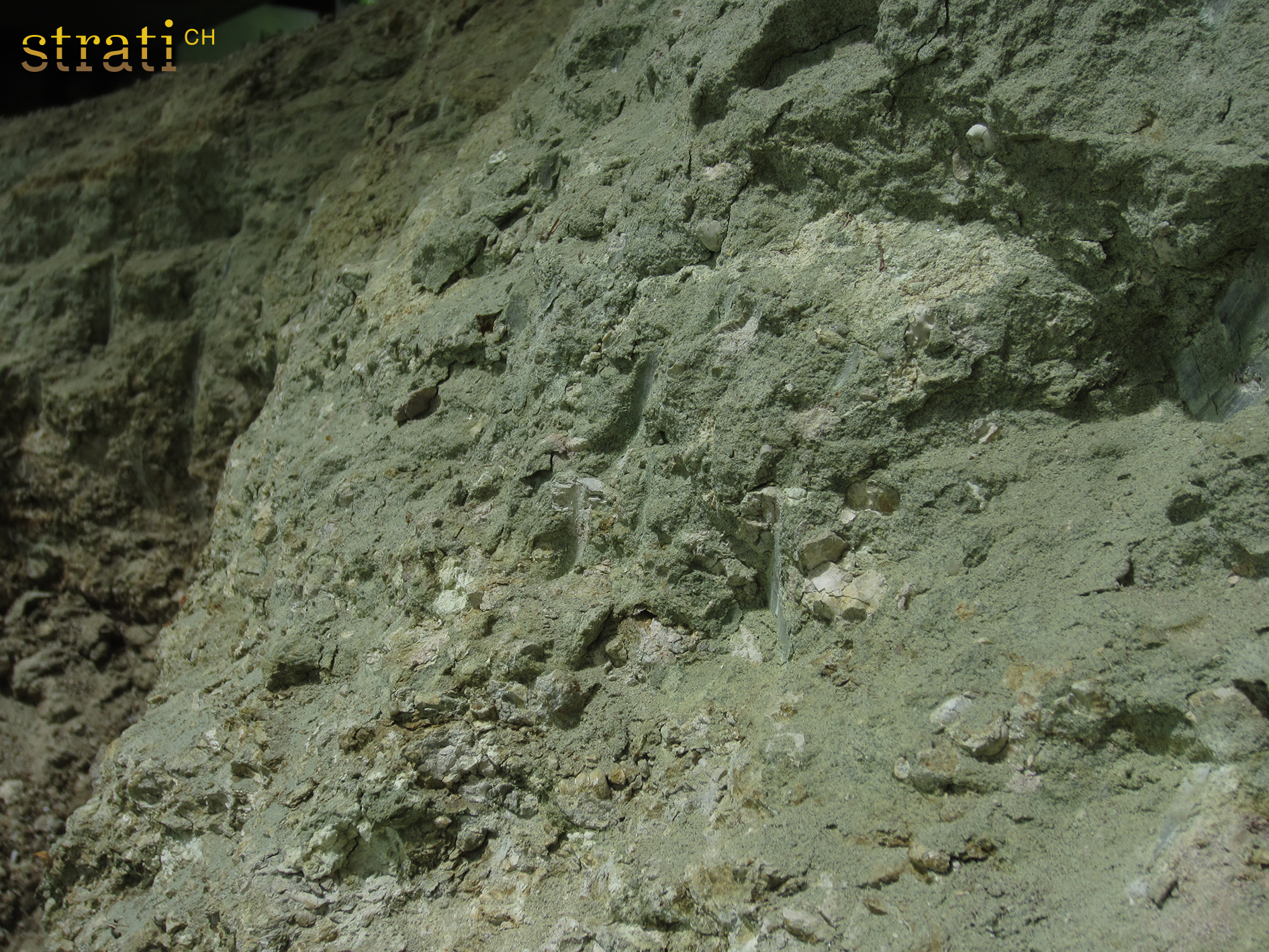Grès des Vernettes
Back to JuraRepresentation and status
- Color RGB
- R: 245 G: 170 B: 170
- Rank
- lithostratigraphic Bed
- Validity
- Unit is in Use
- Status
- informal term
Nomenclature
- Deutsch
- Vernettes-Sandstein
- Français
- Grès des Vernettes
- Italiano
- Arenaria delle Vernettes
- English
- Vernettes Sandstone
- Origin of the Name
-
Les Vernettes, quartier de Bonvy (France) situé au sud de Bellegarde-sur-Valserinne
- Historical Variants
-
Vernettes Beds (Pictet et al. 2016)
Description
- Thickness
- Max. 2 m dans la région de Bellegarde-sur-Valserine, env. 1,2 m dans la région de Ste-Croix.
Hierarchy and sequence
- Superordinate unit
- Units at roof
- Units at floor
Age
- Age at top
-
- Early Albian
- Note about top
-
Zone à C. floridum + H. puzosiana + O. subhilli
- Age at base
-
- Early Albian
- Note about base
-
Zone à L. irregularis + S. kitchini
- Dating Method
-
Biostratigraphie des ammonites (Pictet in prep.)
Geography
- Type area
- Jura méridional
Palaenography and tectonic
-
- Cretaceous of the Jura Mountains
- Tectonic unit (resp. main category)
-
-
Jura
:
Juragebirge
-
Jura
:
- Kind of protolith
-
- sedimentary
- Metamorphism
- non metamorphic
References
- Definition
-
(2016) :
The Perte-du-Rhône Formation, a new Cretaceous (Aptian-Cenomanian) lithostratigraphic unit in the Jura mountains (France and Switzerland). Swiss J. Geosc. 109/2, 221-240
From the base to the top of the Mussel Mb, five subunits have been identified (Fig. 8).
The third one, the Vernettes Beds (unit S9, Figs. 4, 8g–h), is a 0–10 m thick light green, white or orange, lightly marly sandstone. The microfacies is a glauconite and quartz-rich packstone (Fig. 8h). The Vernettes Beds includes a basal white phosphatic conglomerate, which delivered a rich benthic (echinids, bivalves, gastropods, brachiopods) and an abundant nectonic macrofauna (belemnites, and about 11 ammonites taxa, Fig. 8i, Pictet and Roux 1847–1854, Pictet and Campiche 1858–1871, Renz and Jung 1978). The ammonite fauna from these beds records the Aptian-Albian boundary and presents some unusual taxa. This fauna will be the subject of a future detailed palaeontological study.

